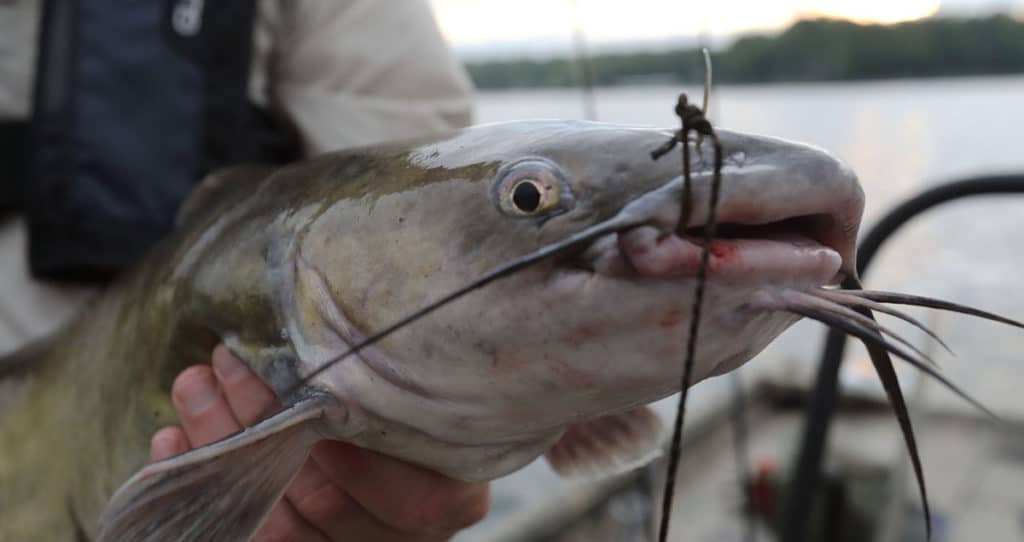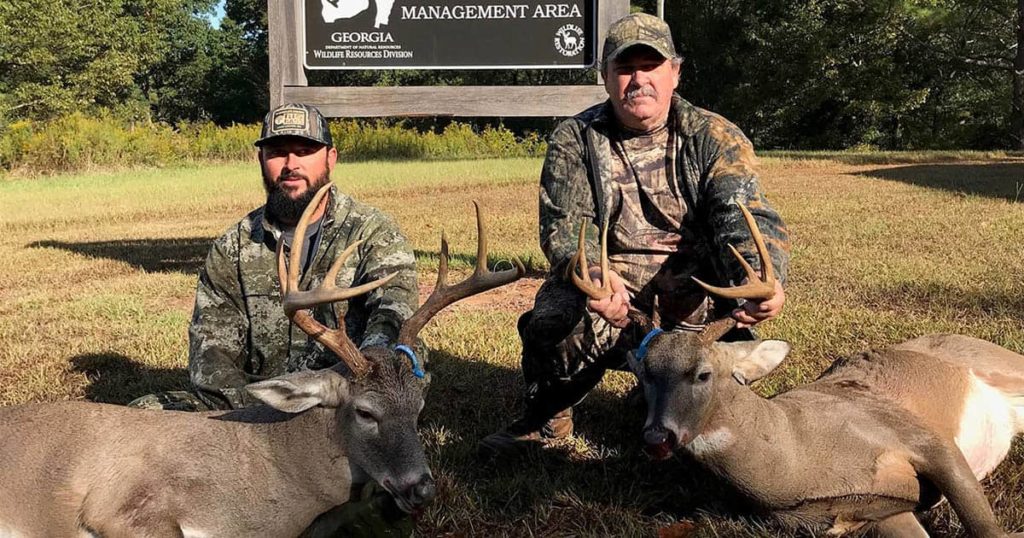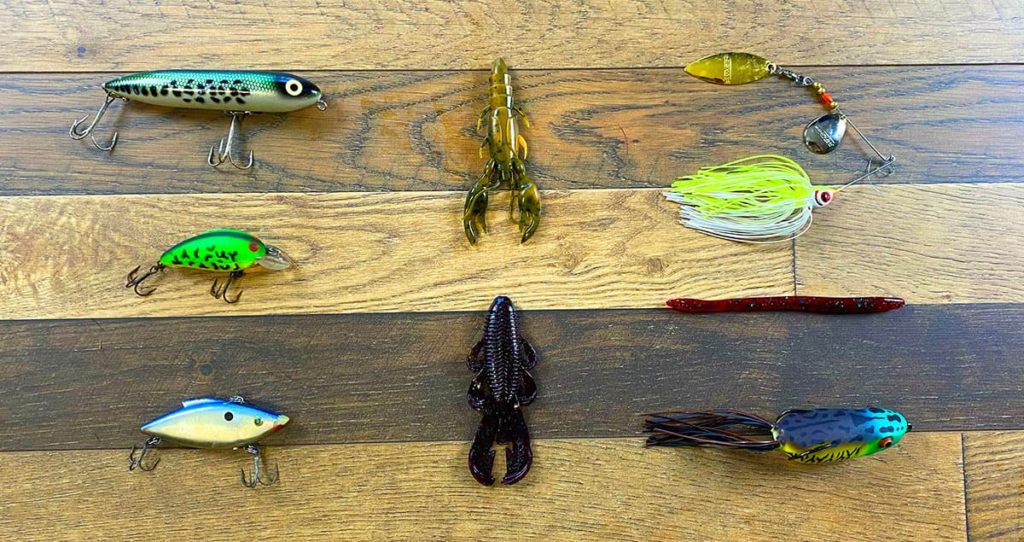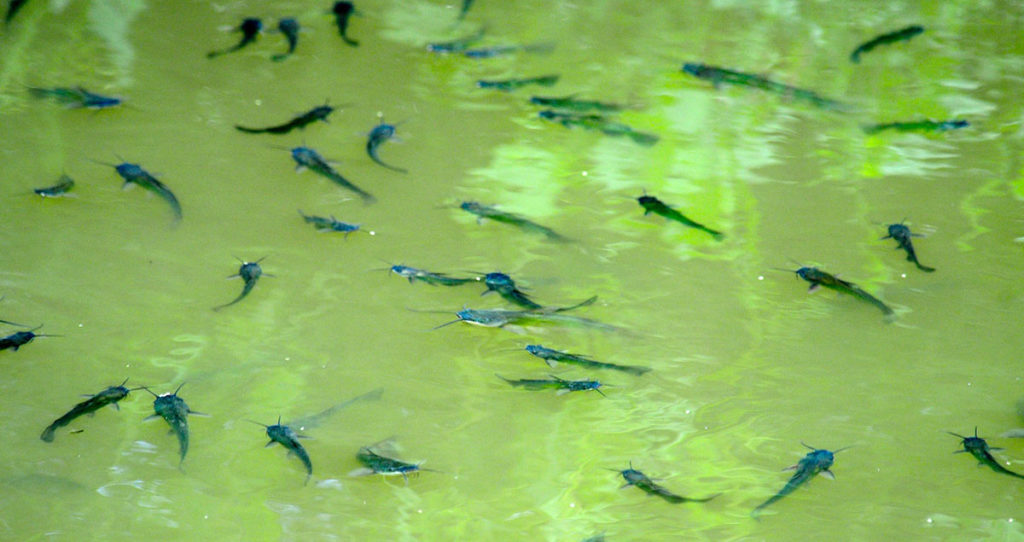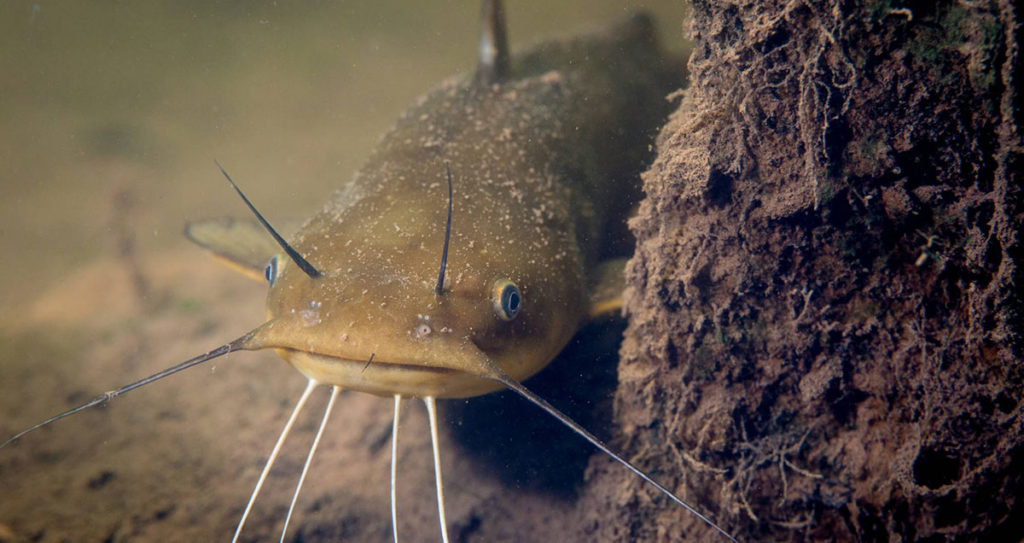Georgia is a haven for anglers, especially those who love to target bass. The state is home to a diverse range of black bass species, each with its own unique characteristics and preferred habitats. In this comprehensive guide, we’ll explore the 10 black bass species found in Georgia, delving into their appearance, preferred habitat, behavior, and where you’re likely to find them in the state. So, grab your fishing gear and let’s get started!
1. Largemouth Bass (Micropterus salmoides)

Appearance
Largemouth bass are the largest and most recognized black bass species. They have a distinctive, large mouth that extends past their eye when closed, a broad, sloping forehead, and a deep, laterally compressed body. Their coloration is typically greenish to brown with a dark, horizontal stripe along the middle of the body.
Preferred Habitat
Largemouth bass prefer warm, shallow waters with plenty of vegetation and structure like submerged logs, rocks, and docks. They can be found in ponds, lakes, reservoirs, and slow-moving rivers.
Behavior
Largemouth bass are aggressive predators, feeding on a variety of prey like smaller fish, frogs, and crayfish. They are known for their explosive strikes and acrobatic leaps when hooked.
Commonly Found
In Georgia, largemouth bass can be found statewide. Some popular fishing spots include Lake Lanier, Lake Oconee, West Point Lake, and Clarks Hill Lake.
2. Smallmouth Bass (Micropterus dolomieu)

Appearance
Smallmouth bass are smaller than largemouth bass, with a mouth that doesn’t extend past their eye. They have a bronze or brownish coloration, with dark vertical bars along their sides.
Preferred Habitat
Smallmouth bass prefer cooler, clearer waters than largemouth bass. They are often found in rocky areas of lakes, reservoirs, and rivers with moderate to swift currents.
Behavior
These bass are known for their aggressive nature and strong fighting ability. They feed on smaller fish, insects, and crustaceans.
Commonly Found
Smallmouth bass have a limited distribution in Georgia. They can be found in the Coosawattee River, the Conasauga River, and some of their tributaries.
3. Shoal Bass (Micropterus cataractae)

Appearance
Shoal bass are characterized by their olive-green to dark brown coloration with dark, irregular markings along their sides. They have a large mouth, similar to largemouth bass, but their lower jaw doesn’t extend past the eye.
Preferred Habitat
Shoal bass inhabit rocky shoals and swift currents in medium to large rivers.
Behavior
These bass are opportunistic feeders, preying on fish, insects, and crayfish. They are known for their strong fighting ability and are highly sought after by anglers.
Commonly Found
In Georgia, shoal bass are primarily found in the Flint River and some of its tributaries, like the Ichawaynochaway and Kinchafoonee creeks.
4. Suwannee Bass (Micropterus notius)
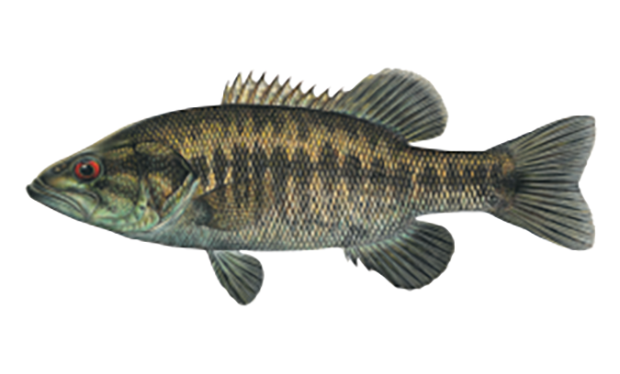
Appearance
Suwannee bass are relatively small, with a dark, olive-green coloration and dark markings along their sides. They have a slightly smaller mouth compared to largemouth bass.
Preferred Habitat
Suwannee bass prefer clear, spring-fed rivers and streams with moderate to swift currents and abundant aquatic vegetation.
Behavior
These bass feed on small fish, insects, and crustaceans. They are known for their aggressive strikes and spirited fights when hooked.
Commonly Found
Suwannee bass are found exclusively in the Suwannee and Ochlockonee River systems in Georgia, including their tributaries.
5. Spotted Bass (Micropterus punctulatus)

Appearance
Spotted bass, also known as Kentucky bass, have a similar appearance to largemouth bass but with a smaller mouth. They are characterized by their olive-green coloration and rows of dark spots along their lower sides.
Preferred Habitat
Spotted bass inhabit clear to slightly stained waters in reservoirs, lakes, and rivers. They are often found around submerged structures, such as rocks, logs, and bridge pilings.
Behavior
These bass are opportunistic feeders, preying on fish, insects, and crayfish. They are known for their aggressive nature and acrobatic fights when hooked.
Commonly Found
Spotted bass can be found statewide in Georgia, but they are most common in large reservoirs like Lake Lanier, Lake Allatoona, and Carters Lake.
6. Redeye Bass (Micropterus coosae)

Appearance
Redeye bass are small, with a dark, olive-green coloration and a series of dark, vertical bars along their sides. They have a red or orange coloration in their eyes, which gives them their name.
Preferred Habitat
Redeye bass inhabit cool, clear streams and rivers with rocky bottoms and moderate to swift currents.
Behavior
These bass primarily feed on insects, small fish, and crustaceans. They are known for their aggressive nature and provide an enjoyable fight on light tackle.
Commonly Found
In Georgia, redeye bass can be found in the Coosa River system, including the Etowah, Oostanaula, and Chattooga rivers.
7. Chattahoochee Bass (Micropterus chattahoochae)
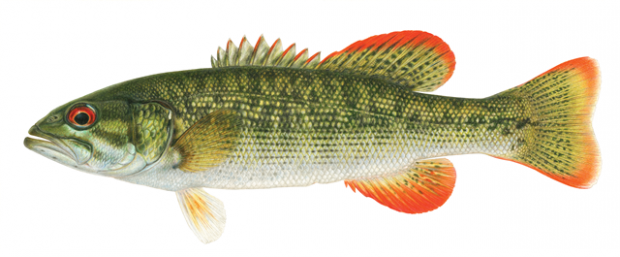
Appearance
Chattahoochee bass have an olive-green to brown coloration with dark, irregular markings along their sides. Their lower jaw doesn’t extend past their eye, and they have a moderately sized mouth.
Preferred Habitat
Chattahoochee bass prefer rocky shoals and swift currents in medium to large rivers.
Behavior
These bass are opportunistic feeders, preying on fish, insects, and crayfish. They are known for their aggressive strikes and strong fighting ability.
Commonly Found
As the name suggests, Chattahoochee bass can be found in the Chattahoochee River system in Georgia, primarily in the middle and upper sections of the river.
8. Tallapoosa Bass (Micropterus tallapoosae)

Appearance
Tallapoosa bass are small, with a dark, olive-green coloration and dark markings along their sides. They have a slightly smaller mouth compared to largemouth bass.
Preferred Habitat
Tallapoosa bass inhabit cool, clear streams and rivers with rocky bottoms and moderate to swift currents.
Behavior
These bass feed on small fish, insects, and crustaceans. They are known for their aggressive nature and spirited fights when hooked.
Commonly Found
Tallapoosa bass are found exclusively in the Tallapoosa River system in Georgia, including its tributaries.
9. Altamaha Bass (Micropterus sp. cf. coosae)
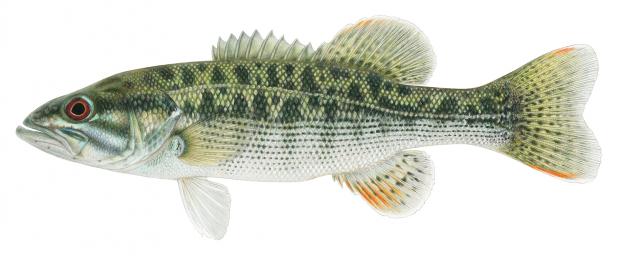
Appearance
Altamaha bass have a dark, olive-green coloration with irregular, dark markings along their sides. They have a moderately sized mouth, and their lower jaw doesn’t extend past their eye.
Preferred Habitat
Altamaha bass prefer rocky shoals and swift currents in medium to large rivers.
Behavior
These bass are opportunistic feeders, preying on fish, insects, and crayfish. They are known for their aggressive strikes and strong fighting ability.
Commonly Found
As the name suggests, Altamaha bass are found exclusively in the Altamaha River system in Georgia, including the Ocmulgee, Oconee, and Ohoopee rivers and their tributaries.
10. Bartram’s Bass (Micropterus sp. cf. cataractae)
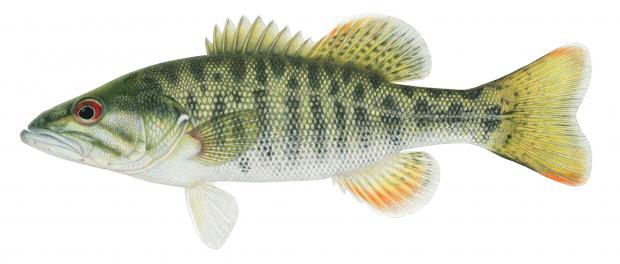
Appearance
Bartram’s bass are characterized by their dark, olive-green to brown coloration with dark, irregular markings along their sides. They have a moderately sized mouth, and their lower jaw doesn’t extend past their eye.
Preferred Habitat
Bartram’s bass inhabit cool, clear streams and rivers with rocky bottoms and moderate to swift currents.
Behavior
These bass primarily feed on insects, small fish, and crustaceans. They are known for their aggressive nature and provide an enjoyable fight on light tackle.
Commonly Found
Bartram’s bass can be found in the Savannah River system in Georgia, including the Broad, Little, and Keowee rivers and their tributaries.
Species Range Map
The Georgia Bass Slam
If you’re passionate about bass fishing and looking for an exciting challenge, Georgia’s Bass Slam is just the thing for you. This program, initiated by the Georgia Department of Natural Resources’ Wildlife Resources Division (WRD), encourages anglers to explore the diverse range of black bass species found throughout the state. By participating in the Georgia Bass Slam, you’ll not only hone your angling skills but also learn more about the state’s various bass habitats and ecosystems.
How to Participate
To successfully complete the Georgia Bass Slam, you need to catch and document at least five of the ten black bass species discussed above within the same calendar year.
Once you’ve caught a qualifying bass, take a photo of your catch and make a note of the location, date, and species. Then, submit your information and photos to the WRD through the Georgia Bass Slam website or by emailing them directly.
Prizes and Recognition
Anglers who successfully complete the Georgia Bass Slam will receive a variety of prizes and recognition for their achievement, including:
- A personalized certificate
- A Georgia Bass Slam hat or t-shirt
- Recognition on the Georgia Bass Slam website and social media channels
- Inclusion in the annual Georgia Bass Slam “Angler’s Gallery”
Additionally, the first angler to complete the Georgia Bass Slam each year will be recognized as the “Angler of the Year” and receive special recognition from the WRD.
Conservation and Education
The Georgia Bass Slam isn’t just about catching fish; it also aims to promote conservation and education among anglers. By participating in the program, you’ll be contributing valuable data to the WRD, helping them better understand and manage Georgia’s diverse bass populations. The more anglers participate, the more valuable information the WRD can collect, ultimately leading to better fishing opportunities and healthier ecosystems across the state.
So, whether you’re a seasoned angler or just getting started, the Georgia Bass Slam is a fantastic opportunity to challenge yourself, explore Georgia’s incredible bass fishing opportunities, and contribute to the conservation of these amazing fish.
Final Thoughts
With this comprehensive guide to the 10 black bass species found in Georgia, you’re now better equipped to identify and target these exciting game fish. Each species offers its own unique set of challenges and rewards, making Georgia an angler’s paradise.
So, whether you’re a seasoned veteran or a newcomer to the sport, grab your gear, hit the water, and enjoy the diverse bass fishing opportunities that Georgia has to offer.


